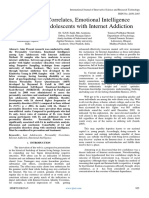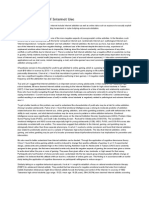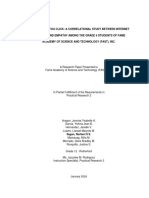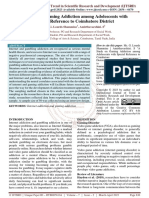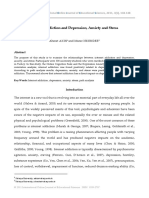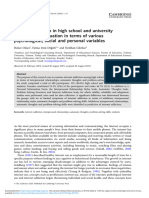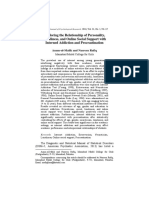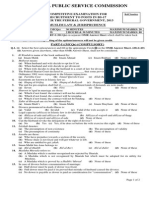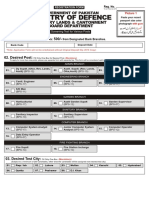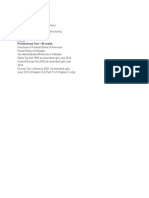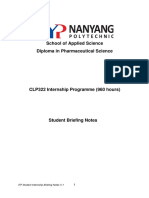0% found this document useful (0 votes)
129 views6 pagesAdolescent Internet Addiction Study
The document proposes a study on internet addiction in adolescents. It will assess the prevalence of internet addiction in a large sample of adolescents and explore interactions between personality traits and usage of specific internet applications as risk factors. The study will involve surveys and interviews to identify themes. Data will be analyzed using Google forms and results will provide context to existing literature on risk factors for internet addiction in adolescents.
Uploaded by
jamsheed alamCopyright
© © All Rights Reserved
We take content rights seriously. If you suspect this is your content, claim it here.
Available Formats
Download as DOCX, PDF, TXT or read online on Scribd
0% found this document useful (0 votes)
129 views6 pagesAdolescent Internet Addiction Study
The document proposes a study on internet addiction in adolescents. It will assess the prevalence of internet addiction in a large sample of adolescents and explore interactions between personality traits and usage of specific internet applications as risk factors. The study will involve surveys and interviews to identify themes. Data will be analyzed using Google forms and results will provide context to existing literature on risk factors for internet addiction in adolescents.
Uploaded by
jamsheed alamCopyright
© © All Rights Reserved
We take content rights seriously. If you suspect this is your content, claim it here.
Available Formats
Download as DOCX, PDF, TXT or read online on Scribd
/ 6

